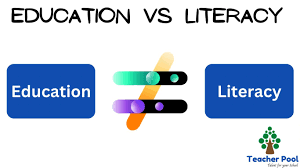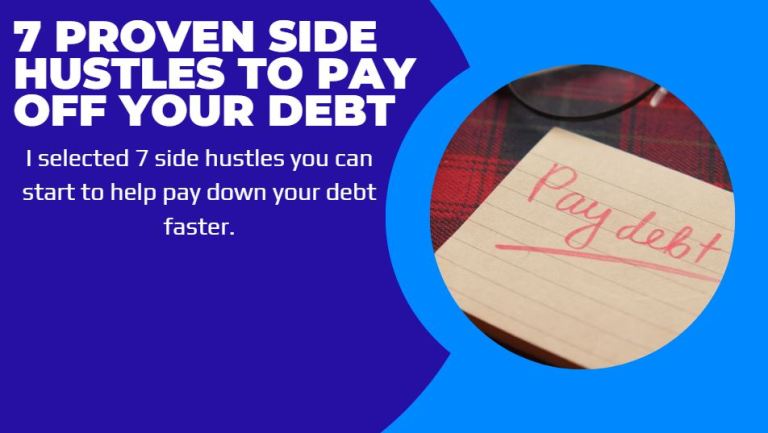From Debt to Wealth: Transform Your Finances with Strategic Planning
Stick with me for a moment. If you’re drowning in debt and wondering if there’s a life raft out there for you, you’ve clicked on the right article. According to recent surveys, over 50% of Americans live paycheck to paycheck. If that’s you, don’t worry—there’s a way out.
Today, we’ll explore how to transition from being debt-laden to being financially free. You might need a financial strategy that doesn’t involve a winning lottery ticket (sorry to burst that bubble). So, grab your coffee, put on your thinking cap, and let’s dive in!
“Wealth doesn’t just happen; it’s planned.”— Anonymous
Understanding Debt
Let’s face it, debt feels like a monster lurking under the bed.
The Reality of Debt
- Types of Debt:
- Secured Debt: Mortgages, auto loans
- Unsecured Debt: Credit cards, medical bills
According to Statistics:
– The average American owes over $90,000 in debt.
– Student loan debt has surpassed $1.7 trillion in the U.S.
Debt can feel like quicksand. The more you struggle, the deeper you sink. You never planned to be here, but life has a funny way of throwing curveballs.
The Cost of Debt
When you’re in debt, your money works for the creditors rather than for you.
- Interest Rates: Average credit card interest is around 15%.
Fees and Penalties: Late payments can lead to fees of up to $40 each.
“The borrower is slave to the lender.”— Proverbs 22:7
The Mindset Shift
Transforming your finances begins with millions of tiny shifts in perception.
Change Your Narrative
Instead of viewing debt as a daunting wall, think of it as a hurdle. You can jump over it!
- Embrace Your Situation: Accept where you are today.
- Focus on Progress: Remember, small steps lead to big changes.
Financial Literacy
Understanding finance is like learning a new language, and guess what? You can be fluent!
- Read Blogs and Books: Knowledge is your new best friend.
- Attend Workshops: Engage with community resources.
“An investment in knowledge pays the best interest.” — Benjamin Franklin
Strategic Planning: Your Roadmap to Wealth
Create a Budget
Ah, the dreaded “b” word. Budgeting doesn’t have to suck the joy out of your life. Think of it as a spending plan.
- Track Your Income and Expenses:
– Use apps or spreadsheets.
– Identify needs vs. wants.
- 50/30/20 Rule:
– 50% on necessities,
– 30% on discretionary spending,
– 20% on savings and debt repayment.
“A budget tells us what we can’t afford, but it doesn’t keep us from buying it.”— William Feather
Set Clear Financial Goals
Goals are like the GPS for your financial journey. Without them, you’re lost.
- Short-Term Goals:
– Pay off credit card debt
– Build an emergency fund (start with $1,000)
- Long-Term Goals:
– Save for retirement
– Invest in real estate or stocks
Develop a Debt Repayment Strategy
Being strategic about debt repayment can actually make your hair stop turning grey.
- Snowball Method: Pay off the smallest debts first for a psychological boost.
- Avalanche Method: Focus on paying off debts with the highest interests first.
Using these methods can save you money and time.
“Don’t watch the clock; do what it does. Keep going.”— Sam Levenson
Emergency Fund: The Financial Safety Net
Before you jump into investments, make sure you have a safety net.
– Aim for 3-6 months of living expenses.
– Start small; even $500 can make a difference.
Investing: Your Ticket to Wealth
Now we’re getting to the fun part—investing! It sounds intimidating, but it can be rather thrilling (just think of it as financial adventuring).
Understand Your Risk Tolerance
Not all investments are created equal. You’ll need to figure out how much risk you can stomach.
- Conservative: Bonds, savings accounts
- Moderate: Indexed funds
- Aggressive: Stocks, cryptocurrencies
“In investing, what is comfortable is rarely profitable.”— Robert Arnott
Start with Retirement Accounts
If your employer offers a 401(k), say yes! This is essentially free money.
- Employer Match: At least contribute enough to get the full match.
- IRA Options: Consider a Roth or Traditional IRA based on your tax situation.
Building Wealth Through Passive Income
What if I told you that money can grow while you sleep? Yes, please!
Explore Passive Income Streams
- Real Estate Investing: Rent out a property.
- Dividend Stocks: Invest in companies that pay you just for holding their shares.
“The best time to plant a tree was twenty years ago. The second best time is now.”— Chinese Proverb
Maintaining Your Financial Health
Congratulations! You’re moving toward wealth. But like any relationship, it requires upkeep.
Regular Reviews
Don’t let your financial plan gather dust.
- Monthly Check-Ins: Review your budget and goals.
- Annual Financial Review: Adjust for changes in income, expenses, or life circumstances.
Stay Informed
The financial world is ever-changing.
- Subscribe to financial news outlets.
- Follow experts on social media.
“The only thing worse than being blind is having sight but no vision.” — Helen Keller
FAQs
Q1. How long will it take to pay off my debt?
A: It depends on your debt amount and repayment strategy. Using the snowball or avalanche methods can accelerate your progress.
Q2. What if I have multiple debts?
A: Prioritize based on interest rates or balances. Choose a repayment method that aligns with your personality.
Q3. When should I start investing?
A: Start investing as soon as you have an emergency fund. The earlier you start, the more compound interest you’ll earn.
Q4. Can I afford to invest if I’m in debt?
A: Focus on debt repayment first, especially high-interest debt. After addressing that, allocate funds towards investing.
Q5. What are the best resources for financial literacy?
A: Consider personal finance books, online courses, podcasts, or even financial advisors for guidance.
Going from debt to wealth requires commitment, planning, and a dash of humor to get through it all. Your financial health is ultimately in your hands.
So, take a breath, start following these steps, and pretty soon, financial freedom won’t just be a pipe dream but a tangible reality.
“Success is how high you bounce when you hit bottom.” — George S. Patton










https://tadalaccess.com/# when does cialis go off patent
where can i get cialis order generic cialis online 20 mg 20 pills or buy cheapest cialis
https://clients1.google.gr/url?q=https://tadalaccess.com cialis from india online pharmacy
[url=https://images.google.ki/url?q=https://tadalaccess.com]cialis used for[/url] tadalafil best price 20 mg and [url=http://foru1f40m.bunbun000.com/bbs/home.php?mod=space&uid=9598949]cialis samples[/url] where can i buy cialis on line
tadalafil tablets side effects [url=https://tadalaccess.com/#]TadalAccess[/url] buy cialis by paypal
20 mg tadalafil best price: TadalAccess – cialis images
cialis for sale in canada cialis 5mg price comparison or cialis from india online pharmacy
http://www.fullcirclecruise.com/redirect.asp?url=tadalaccess.com cialis alternative over the counter
[url=https://www.klickerkids.de/index.php?url=http://tadalaccess.com]tadalafil and sildenafil taken together[/url] best place to buy generic cialis online and [url=https://www.oppo.xyz/home.php?mod=space&uid=20634]cialis amazon[/url] cheapest cialis 20 mg
cialis timing cialis tadalafil discount or cialis available in walgreens over counter??
http://images.google.mn/url?q=http://tadalaccess.com oryginal cialis
[url=https://clients1.google.com.bo/url?sa=t&url=https://tadalaccess.com::]buy cheapest cialis[/url] tadalafil without a doctor prescription and [url=http://www.superiptv.com.cn/home.php?mod=space&uid=119719]wallmart cialis[/url] tadalafil tablets side effects
side effects of cialis tadalafil: TadalAccess – buying cialis generic
side effects of cialis [url=https://tadalaccess.com/#]cialis purchase[/url] canada drugs cialis
https://tadalaccess.com/# cialis 5mg review
cialis and dapoxetime tabs in usa: overnight cialis delivery usa – cialis prescription online
cialis tadalafil online paypal [url=https://tadalaccess.com/#]cialis price cvs[/url] cialis sell
cialis advertisement generic cialis tadalafil 20mg india or cialis generic versus brand name
http://www.flugzeugmarkt.eu/url?q=https://tadalaccess.com difference between tadalafil and sildenafil
[url=https://www.google.bs/url?q=https://tadalaccess.com]free cialis samples[/url] cialis paypal and [url=https://quantrinet.com/forum/member.php?u=812816]tadalafil generic 20 mg ebay[/url] best price on cialis
ambrisentan and tadalafil combination brands: cheap cialis – where can i buy tadalafil online
cialis canadian pharmacy ezzz [url=https://tadalaccess.com/#]TadalAccess[/url] cialis generic overnite shipping
cialis 5 mg price cialis from canadian pharmacy registerd or cialis black
http://new.0points.com/wp/wp-content/plugins/wp-js-external-link-info/redirect.php?url=https://tadalaccess.com para que sirve las tabletas cialis tadalafil de 5mg
[url=https://clients1.google.com.vc/url?q=https://tadalaccess.com]prices of cialis[/url] what is tadalafil made from and [url=http://www.zgyhsj.com/space-uid-965954.html]shop for cialis[/url] why does tadalafil say do not cut pile
how to get cialis prescription online: Tadal Access – whats the max safe dose of tadalafil xtenda for a healthy man
buy cialis online canada cialis free 30 day trial or when will generic cialis be available
https://www.insai.ru/ext_link?url=http://tadalaccess.com e-cialis hellocig e-liquid
[url=https://images.google.li/url?sa=t&url=https://tadalaccess.com]cialis definition[/url] generic cialis online pharmacy and [url=https://www.oppo.xyz/home.php?mod=space&uid=20657]is there a generic cialis available?[/url] cialis brand no prescription 365
side effects cialis [url=https://tadalaccess.com/#]TadalAccess[/url] pregnancy category for tadalafil
https://tadalaccess.com/# mantra 10 tadalafil tablets
cialis canada price: Tadal Access – where to buy tadalafil online
cialis wikipedia tadalafil versus cialis or no prescription tadalafil
http://www.adhub.com/cgi-bin/webdata_pro.pl?_cgifunction=clickthru&url=https://tadalaccess.com cialis slogan
[url=https://toolbarqueries.google.dj/url?q=https://tadalaccess.com]cialis generic overnite shipping[/url] tadalafil and sildenafil taken together and [url=https://www.support-groups.org/memberlist.php?mode=viewprofile&u=364697]teva generic cialis[/url] does cialis lower your blood pressure
cost of cialis for daily use [url=https://tadalaccess.com/#]where to buy cialis online for cheap[/url] tadalafil and ambrisentan newjm 2015
cialis 20mg: cialis vs flomax for bph – buy cialis in canada
https://tadalaccess.com/# buy cialis online safely
purchase generic cialis [url=https://tadalaccess.com/#]TadalAccess[/url] how long does cialis take to work
no presciption cialis cialis over the counter in spain or п»їwhat can i take to enhance cialis
http://www.choicesweepstakeslinks.com/link.php?url=https://tadalaccess.com cialis online no prescription
[url=https://www.google.cg/url?q=https://tadalaccess.com]buy cialis no prescription[/url] cialis softabs online and [url=https://wowanka.com/home.php?mod=space&uid=14706]cialis canadian pharmacy ezzz[/url] how long does it take for cialis to start working
cialis medicine: TadalAccess – tadalafil vidalista
cialis tadalafil 5mg once a day tadalafil 20mg canada or is tadalafil available at cvs
http://changrunhg.ff66.net/productshow.asp?id=28&mnid=48045&mc=???Р§?Р•???Р§?Р•?РІ?????Р§?Р•???Р§?Р•???Р§?Р•???Р§?Р•&url=http://tadalaccess.com e-cialis hellocig e-liquid
[url=https://clients1.google.co.id/url?q=https://tadalaccess.com]cialis drug[/url] does cialis lowers blood pressure and [url=https://bbs.hy2001.com/home.php?mod=space&uid=72165]natural alternative to cialis[/url] cialis experience reddit
https://tadalaccess.com/# cialis online without a prescription
cheap cialis canada [url=https://tadalaccess.com/#]buy cialis online overnight shipping[/url] cialis online canada
cialis 10 mg: cialis black in australia – cialis and grapefruit enhance
Great blog you have here.. It’s hard to find
high quality writing like yours nowadays. I honestly appreciate individuals like you!
Take care!!
casino en ligne
Pretty section of content. I just stumbled upon your site and in accession capital to claim that I acquire
in fact loved account your weblog posts. Any way I will be subscribing to your augment or even I fulfillment you get entry to constantly rapidly.
casino en ligne
An intriguing discussion is worth comment. There’s no doubt
that that you need to write more on this issue, it might not be a taboo matter but generally people do not speak about these issues.
To the next! Kind regards!!
casino en ligne
When someone writes an paragraph he/she retains the plan of a user in his/her mind that how a user can know it.
Thus that’s why this piece of writing is outstdanding.
Thanks!
casino en ligne
I simply couldn’t depart your website before suggesting that I
really loved the usual info an individual supply in your guests?
Is gonna be back regularly in order to check up on new posts
casino en ligne
Thanks for sharing your thoughts. I truly appreciate your efforts and
I am waiting for your next write ups thank you
once again.
casino en ligne
Hello, i read your blog from time to time and i own a similar
one and i was just wondering if you get a lot of spam comments?
If so how do you stop it, any plugin or anything you can advise?
I get so much lately it’s driving me insane so any support is
very much appreciated.
casino en ligne
Nice post. I was checking constantly this blog and I am impressed!
Very useful information specifically the last part 🙂 I care for such information much.
I was looking for this particular information for a long time.
Thank you and best of luck.
casino en ligne
It’s a shame you don’t have a donate button!
I’d definitely donate to this excellent blog! I suppose for now i’ll settle for book-marking
and adding your RSS feed to my Google account. I look
forward to new updates and will share this blog with my Facebook group.
Chat soon!
casino en ligne
I’m not certain where you are getting your info, but great topic.
I needs to spend some time learning more or working out more.
Thanks for excellent information I used to be in search of this information for my mission.
casino en ligne
online ed prescription: Ero Pharm Fast – п»їed pills online
http://eropharmfast.com/# online ed medicine
Pharm Au 24 [url=https://pharmau24.shop/#]Online medication store Australia[/url] Pharm Au24
buy antibiotics from canada: best online doctor for antibiotics – buy antibiotics for uti
buy antibiotics: Biot Pharm – antibiotic without presription
Medications online Australia: Pharm Au24 – Medications online Australia
online erectile dysfunction prescription [url=http://eropharmfast.com/#]online ed prescription[/url] Ero Pharm Fast
Medications online Australia: Pharm Au24 – PharmAu24
http://biotpharm.com/# buy antibiotics from india
online prescription for ed: Ero Pharm Fast – ed medicines
Ero Pharm Fast: online erectile dysfunction prescription – buy erectile dysfunction medication
http://biotpharm.com/# buy antibiotics from india
buy antibiotics for uti [url=https://biotpharm.shop/#]BiotPharm[/url] Over the counter antibiotics pills
Discount pharmacy Australia: Online medication store Australia – Discount pharmacy Australia
pharmacy online australia: Online drugstore Australia – Discount pharmacy Australia
Buy medicine online Australia Online medication store Australia or Discount pharmacy Australia
https://greencircle.vmturbo.com/external-link.jspa?url=http://pharmau24.shop Pharm Au 24
[url=https://images.google.co.ls/url?sa=t&url=https://pharmau24.shop]Pharm Au 24[/url] Medications online Australia and [url=http://forum.orangepi.org/home.php?mod=space&uid=5218275]Buy medicine online Australia[/url] Medications online Australia
low cost ed meds best ed pills online or where to buy ed pills
https://sostrategic.com.au/?URL=https://eropharmfast.com cheap ed medicine
[url=http://www.google.com.gi/url?q=https://eropharmfast.com]buy ed pills online[/url] ed doctor online and [url=https://jutianwang.cn/home.php?mod=space&uid=24835&do=profile&from=space]cheapest ed online[/url] ed online prescription
https://biotpharm.com/# Over the counter antibiotics for infection
Online medication store Australia: Licensed online pharmacy AU – Buy medicine online Australia
PharmAu24: Licensed online pharmacy AU – PharmAu24
Over the counter antibiotics pills cheapest antibiotics or buy antibiotics from india
https://maps.google.co.vi/url?q=https://biotpharm.com cheapest antibiotics
[url=https://images.google.ad/url?q=https://biotpharm.com]Over the counter antibiotics pills[/url] get antibiotics quickly and [url=http://www.empyrethegame.com/forum/memberlist.php?mode=viewprofile&u=402711]cheapest antibiotics[/url] Over the counter antibiotics for infection
ed pills: cheap erectile dysfunction pills – online prescription for ed
ed online meds: Ero Pharm Fast – ed medications online
ed online treatment [url=http://eropharmfast.com/#]Ero Pharm Fast[/url] Ero Pharm Fast
ed meds cheap best online ed meds or ed meds online
https://images.google.com.vn/url?sa=t&url=https://eropharmfast.com buy ed meds
[url=http://clients1.google.bt/url?q=https://eropharmfast.com]erectile dysfunction medications online[/url] п»їed pills online and [url=http://lzdsxxb.com/home.php?mod=space&uid=4583363]buy erectile dysfunction pills[/url] erection pills online
https://pharmau24.com/# Discount pharmacy Australia
Online medication store Australia online pharmacy australia or Online drugstore Australia
http://clients1.google.nu/url?q=https://pharmau24.shop pharmacy online australia
[url=https://images.google.ps/url?sa=t&url=https://pharmau24.shop]Pharm Au 24[/url] PharmAu24 and [url=http://bocauvietnam.com/member.php?1662375-rwasnckibk]Pharm Au24[/url] Online drugstore Australia
Online drugstore Australia: Licensed online pharmacy AU – PharmAu24
Over the counter antibiotics pills: buy antibiotics online uk – buy antibiotics from canada
Buy medicine online Australia [url=https://pharmau24.shop/#]Pharm Au24[/url] PharmAu24
buy antibiotics over the counter buy antibiotics from canada or over the counter antibiotics
https://clients1.google.com.bh/url?q=https://biotpharm.com antibiotic without presription
[url=http://www.google.nl/url?sa=t&url=https://biotpharm.com]best online doctor for antibiotics[/url] buy antibiotics from india and [url=https://www.gztongcheng.top/home.php?mod=space&uid=920976]buy antibiotics[/url] buy antibiotics for uti
antibiotic without presription: buy antibiotics online uk – get antibiotics without seeing a doctor
buy ed pills online: erectile dysfunction medication online – ed medicines online
erectile dysfunction pills for sale ed online prescription or ed prescription online
http://www.krovatka.ru/f/rr.cgi?http://eropharmfast.com/ erectile dysfunction medication online
[url=https://images.google.com.ai/url?q=https://eropharmfast.com]cheapest online ed meds[/url] cheapest ed meds and [url=https://www.support-groups.org/memberlist.php?mode=viewprofile&u=367455]ed drugs online[/url] cheap ed meds
get antibiotics without seeing a doctor over the counter antibiotics or <a href=" http://srv5.cineteck.net/phpinfo/?a%5B%5D=kitchen+design+ideas+%5B<a+href=https://biotpharm.com::"//biotpharm.com/] “>get antibiotics without seeing a doctor
https://cse.google.ki/url?sa=t&url=https://biotpharm.com get antibiotics without seeing a doctor
[url=https://cse.google.mv/url?sa=t&url=https://biotpharm.com]buy antibiotics[/url] cheapest antibiotics and [url=http://lsdsng.com/user/754127]antibiotic without presription[/url] get antibiotics without seeing a doctor
cheapest ed medication ed prescription online or online erectile dysfunction prescription
https://eng.b2club.ru/buyticket/concertru/?url=https://eropharmfast.com/ online ed drugs
[url=http://www.google.cv/url?q=http://eropharmfast.com]erection pills online[/url] cheapest ed meds and [url=http://www.yya28.com/home.php?mod=space&uid=1732338]online ed pills[/url] online ed pills
m1a7zn
q20q9f
p512fs
738w1j